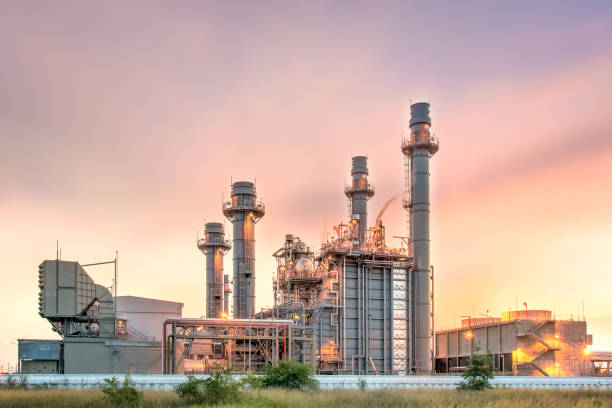Introduction
Combined Heat and Power plants, also known as cogeneration systems, are innovative energy solutions designed to simultaneously produce electricity and useful thermal energy from a single fuel source. By capturing and utilizing the waste heat generated during electricity production, CHP plants achieve higher overall efficiency compared to traditional energy generation methods. This dual-output capability not only enhances energy utilization but also significantly reduces greenhouse gas emissions, contributing to sustainability goals. As global energy demands continue to rise, CHP plants offer a versatile and eco-friendly approach to meet heating and power needs in residential, industrial, and commercial sectors. Their ability to integrate with various energy sources, including fossil fuels and renewables, positions CHP technology as a key player in the transition toward a more sustainable and resilient energy future.
Heat Rejection
CHP plants generate substantial amounts of waste heat during the electricity generation process. Cooling towers facilitate the rejection of this excess heat into the atmosphere, ensuring that the plant operates within optimal temperature ranges. By effectively dissipating heat, cooling towers prevent overheating of key components, thereby enhancing overall system reliability and longevity.
Temperature Regulation
Maintaining appropriate operating temperatures is critical for the efficiency of CHP plants. Cooling towers help regulate temperatures of the circulating water used in the system, providing the necessary cooling to maintain consistent thermal performance. This regulation helps optimize the heat recovery process, allowing CHP systems to deliver both electricity and heat efficiently.
Improved Energy Efficiency
By integrating cooling towers, CHP plants can enhance their energy efficiency significantly. The cooling process enables the plant to extract more usable heat from the fuel being burned, maximizing the overall thermal efficiency of the system. This increased efficiency translates to lower fuel consumption, reduced operating costs, and lower emissions, aligning with sustainability goals.
Water Management
Cooling towers utilize water as a cooling medium, and efficient water management is crucial in CHP operations. By recycling cooling water, these towers minimize water consumption and reduce the environmental impact associated with water sourcing. Proper water treatment and management in cooling towers help prevent scaling and fouling, ensuring continuous and efficient operation of the CHP plant.
Support for Different Fuels
CHP plants can operate using a variety of fuels, including natural gas, biomass, and waste-derived fuels. Cooling towers can adapt to different operational requirements and assist in maintaining optimal performance across various fuel types. This flexibility is essential for CHP plants aiming to utilize diverse energy sources while maximizing overall efficiency.
Facilitating Co-Generation
The primary advantage of CHP systems is their ability to provide both electricity and thermal energy for heating applications. Cooling towers play a crucial role in facilitating this co-generation by managing the heat that is diverted to space heating, industrial processes, or district heating systems. This dual output increases the overall utilization of energy produced, further enhancing the plant’s economic and environmental benefits.
Integration with Renewable Energy
As the energy sector increasingly moves toward renewable sources, cooling towers in CHP plants can support the integration of technologies like solar thermal energy. By utilizing cooling systems that can work in conjunction with renewable energy sources, CHP plants can enhance their sustainability and further decrease reliance on fossil fuels.
Emergency Cooling Solutions
In the event of a system failure or overheating, cooling towers provide emergency cooling solutions to critical components of CHP plants. This capability helps protect equipment from damage and ensures a swift recovery to normal operational conditions, contributing to the overall reliability of the power generation process.
Cost Reduction
By optimizing heat rejection and improving overall efficiency, cooling towers help reduce the operational costs of CHP plants. Lower energy consumption, reduced maintenance needs, and prolonged equipment life lead to significant cost savings, making CHP systems more economically viable.
Conclusion
Combined Heat and Power (CHP) plants represent a significant advancement in energy efficiency and sustainability by enabling the simultaneous generation of electricity and thermal energy. By optimizing the use of fuel and effectively capturing waste heat, CHP systems can achieve efficiencies that far exceed those of conventional power generation methods. Their adaptability to various fuel sources and applications makes them a versatile solution for meeting the growing global energy demands. Furthermore, CHP plants contribute to reducing greenhouse gas emissions and enhancing energy security, making them integral to efforts aimed at combating climate change. As the world shifts toward more sustainable energy practices, the adoption and expansion of CHP technology will play a crucial role in creating a cleaner, more efficient, and resilient energy landscape for future generations.

